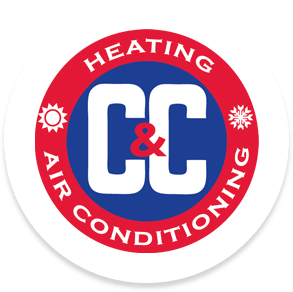6 Tips to Help You Keep Track of Your Home’s Indoor Air Quality
Maintaining the quality of the air inside your Roseville, MI, home is of utmost importance. After all, you spend a lot of time in your home, meaning that much of the air you breathe is taken from your home’s indoor air. Therefore, the quality of the air inside your home will ultimately determine your overall health.
However, it can be difficult to maintain your home’s indoor air quality if you don’t know the air quality readings. That’s why monitoring the quality of the air in your home is just as important as maintaining it. With some basic tools from C & C Heating & Air Conditioning, you can get a better grasp of your home’s air quality so that you can work to improve it.
1. Understanding the Problem
There are a surprising number of factors that affect your home’s indoor air quality. Furthermore, there are many substances that can negatively affect both your home’s indoor air quality and your health that you may not even be aware of. Some contaminants, such as dust and carbon monoxide, are fairly well-known. Other indoor air quality problems, however, aren’t as widely publicized. These problems include humidity that is too high or too low, the presence of radon and an overabundance of volatile organic compounds (VOCs).
Therefore, to maintain optimal air quality, you need to monitor all of these factors at all times or at least take readings on a regular basis. The key to keeping the process simple and efficient is understanding the best ways to test for these issues so that keeping your home’s indoor air healthy doesn’t become an all-consuming task.
2. Carbon Monoxide Monitoring
Keeping your home’s carbon monoxide levels in check is fairly straightforward. After all, a carbon monoxide release won’t occur unless there’s a problem with a gas-burning appliance, such as a furnace, hot water heater or stove. Since these problems can occur without warning, though, your best bet to keep yourself safe is to monitor for this toxic substance at all times.
The good news is that carbon monoxide detectors from C & C Heating & Air Conditioning are inexpensive, easy to install and easy to read. These detectors have an alarm that will sound if the level of carbon monoxide in your home exceeds a certain threshold. With carbon monoxide detectors in strategic locations around your home, you’ll never have to worry about carbon monoxide poisoning. To ensure accurate monitoring, it’s important to replace your batteries according to the manufacturer’s recommended schedule.
3. Radon Testing
Although radon has gotten more exposure in recent years, it is still one of the most frequently overlooked indoor air quality issue. For non-smokers, radon is the leading cause of lung cancer, according to the EPA. When you consider that most people’s radon exposure takes place in their own homes, it’s easy to see why radon testing and monitoring is so vital.
When it comes to radon, you have two options. Your first option is to perform a radon test. These tests should be done every two years. They typically last about 48 hours. Once the test is complete, you’ll need to send the test kit off to a lab to be analyzed.
Your other option to protect yourself from radon is ongoing monitoring. Digital monitors are now available that can keep track of the radon levels in your home. These are useful because they allow you to see both short-term and long-term levels of radon in your home. Given the potential health risks associated with radon exposure, we recommend that you use both types of testing to ensure accuracy.
4. Volatile Organic Compounds
Another contaminant that you’ll need to monitor for is volatile organic compounds, also known as VOCs. VOCs encompass a wide range of indoor contaminants, including benzene, formaldehyde, toluene, xylene, 1,3-butadiene and more. These various substances can have serious health consequences if you don’t work to remove them from your home. Many VOCs can be detected using an automated indoor air quality monitor. These monitors test for a wide range of indoor contaminants, including VOCs. They can also test humidity levels and other factors relating to home comfort.
However, to test for the full range of VOCs, it’s best to have a professional test performed by C & C Heating & Air Conditioning. This is because monitors that are designed for residential use often aren’t as accurate or as wide-ranging as professional-quality monitors. You can also run individual tests for specific contaminants if you have concerns about the accuracy of the full-spectrum test.
5. Don’t Forget Humidity
Although humidity likely won’t cause any health issues, it can make your home uncomfortable. Humidity levels that are too high can cause a feeling of stickiness on surfaces, mold and mildew growth and other problems. On the other hand, low humidity levels can cause dry skin, cracks in your wood and drywall and enhanced susceptibility to illness due to dry nasal passages.
The best way to monitor your home’s humidity levels is to use a hygrometer. Hygrometers can be found in both digital and analog formats and are often included alongside a thermometer. In most homes, it’s best to try and keep your humidity levels between 30 and 50%. If you have low humidity levels, you can use a humidifier to release water vapor into the air. For high humidity levels, a whole-home dehumidifier from C & C Heating & Air Conditioning is your best option.
6. Particulate Matter
Another indoor contaminant that you’ll need to watch out for is particulate matter. Better known as “dust,” particulate matter represents a wide range of different materials. Dead skin cells, dust mites, fibers from clothes, pollen and many other materials are all present in your home’s dust at any given time.
Although there are air quality monitors available that can test the concentration of dust in your home’s air, the good news is that monitoring the presence of dust doesn’t have to be complicated. After all, all that you really need to do to test for dust is to take a look at your furniture and watch how quickly it gets dusty after it’s been dusted. If it seems to become dusty unusually quickly, then you likely have a high concentration of particulate matter in your home’s air.
Another great way to check the dust levels is to track how long it takes for your HVAC system’s air filter to become saturated with dust. If it takes less than a month for the filter to become clogged, your air probably has more particulate matter than it should. Since a high concentration of particulate matter can lead to respiratory irritation, it’s a good idea to have C & C Heating & Air Conditioning clean your home’s ducts to help with this problem.
Helping Clear the Air
At C & C Heating & Air Conditioning, we want our customers to be able to live happy, healthy lives. That’s why we offer a variety of indoor air quality solutions to help you breathe easier. We also offer repair, maintenance and installation for furnaces and air conditioners, as well as the installation of ductless mini-split systems. For over 70 years, the professionals at C & C Heating & Air Conditioning have been providing great service to customers around the Roseville, MI, community. This longstanding commitment is why we consistently receive five-star reviews.
For more information about improving your home’s indoor air quality, contact C & C Heating & Air Conditioning in Roseville today. We look forward to the opportunity to serve all of your indoor climate comfort needs.





